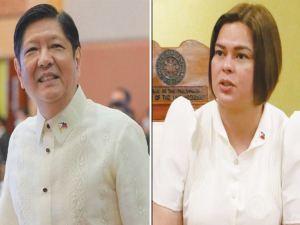Japan ended the Philippines’ four-year reign as overall champion but the biggest story in the VI Far Eastern Games in Osaka in 1923 was Filipino cager Luis “Lou”Salvador who set an all-time record 116 points in a single game.
Salvador’s 116-point production, most of them coming from mid-court, has remained in the record books up to this present day, 94 years after, gifted the Philippines back the basketball gonfalon the Filipinos lost to China two years prior
That was the first and only time the Philippine yielded the basketball crown in the 10 editions of the biennial Games among the top athlete from Japan, China and the Philippines until 1934 when it was dissolved due to World War II.
Inspired by Japanese emperor Yoshihito, who declared the hostilities open at the Osaka Municipal Field in the city hosting he triangular conclave for the first time, Japan’s runner, throwers and jumpers dethroned the Filipinos as track and field titlists besides winning, too, in tennis and swimming.
The Filipinos, who emerged the general champions in 1913 and 1919 in Manila and 1921 in Shanghai, reigned supreme anew in basketball, baseball and volleyball in finishing second overall. That was their third straight crown in baseball, while recovering the volleyball plum they also lost to the Chinese in 1921.
China again ended up third overall with a lone title triumph in football, its fourth consecutive after wresting the diadem from the Filipino booters in 1917. The Filipinos were the football kingpins in the Games inaugural presentation in 1913.
It wasn’t at all that bad a showing of the Filipinos on the track and in the field.
Sprinter Fortunato Catalon, unfazed by inroduction of the metric system in measuring the distance from yards, retained his calling as Asia’s fastest man since 1917, beating all comers anew in the 100-meter dash.
Future Olympian David Nepomuceno, who would have to represent the country for the first time in the Paris Olympic Games the following year, took top honors in the 200 meters, in the process towing a tiring Catalon himself and Cirilo Perez an all-Filipino 1-2-3 finishes.
Four other Filipinos emerged with a gold medal haul each – Paulino Fernandez and Emilio Bucoy, who swept the 120-yard and 220-yard hurdles, respectively, Regino Bertulfo in discus throw and Juan Taduran in decathlon. Later in the day, Bertulfo still had to go to the indoor stadium to help the Philippine team keep the baseball title.
Rounding out the Filipino medal winners in athletics were Francisco Danao, Juan Escamos, Rufino Nollido, Anonio Alo, Simon Santos, Aguedo Torres, Arturo Roa, and PH 4×220 and 4×440 relay teams, all silver medalists; and broze medalists Valentin Malinao, Pedro Abiera, Mala, Sebastian Bontoc, and Emilio Silverio.
Cager Jovito Gonzales bade his long 12-yeear stint in the national basketball team goodbye by bringing home his fifth gold medal, while welcoming NCAA standouts Mariano Filomeno, who later was to become the best forward the Game had produced, Mariano Sangle, Emiterio Montelibano and Albeert Morrow.
Another Oympian-to-be shone in the pool in the person of Teofilo Yldefonso, who topped the 200-meter, the same event he would be handing the country back-to-back back bronze medals in th 1928 and 1932 Olympic Games in Hilsinki ands Los Angeles respectively.
Gregorio Osias, Knga, and Assad Usman joined Yldefonso with a silver medal each kin swimming
Like in basketball, the volleyball squad paraded several talented players in the mold of Caloocan Mayor-to-be Macario Asistio, Enrique Alcantara, Andres Carreon, Ricaredo dela Rosa and Ramon Nolasco, among others, that helpd in the Philippines’ title-recovdring bid.
By EDDIE G. ALINEA








